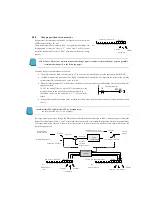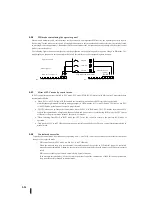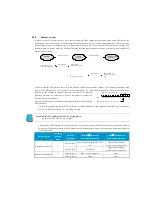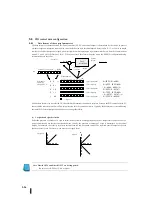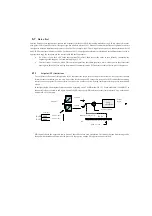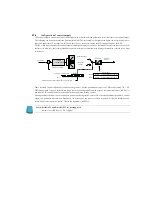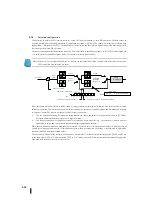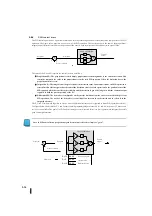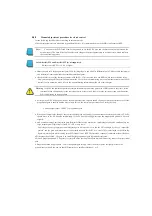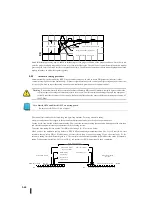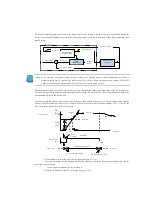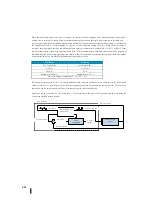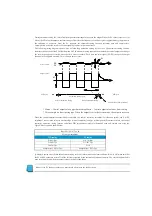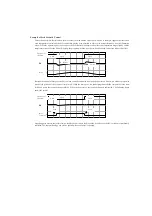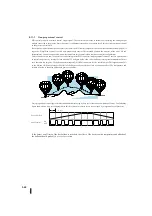
5-8-3
Direct (heating) and reverse (cooling) controls
The gain of the process determines how it must be controlled. The process shown in the figure below has a clear gain, called
"direct-acting". This also means that as the control output increases, the process variables increase. Of course, the real process is
usually a complex transmission function, including time delay. Here, attention is paid to the direction of the change in the
process variable corresponding to the change in the control output.
Most processes and controls are direct-acting, such as temperature control. The applied heat increase increases the PV
(temperature). Accordingly, direct-acting control is sometimes called heating-type control.
"Reverse" control has a negative gain as the process is shown below. Increased control output reduces PV. This is common in
cooling controllers where an increase in cooling input causes a decrease in PV (temperature). Therefore, reverse control is
sometimes called cooling control.
First, know if a particular control is direct or reverse. Without temperature control, there is no obvious answer. In flow control,
the valve positioning circuit can be reverse-operated as easily as direct-acting and wired. One simple way to find one is to run
control in manual mode. In this case, the control output value must be created manually. Determine if the PV increases or
decreases in response to the incremental step in the control output.
The control output must be programmed correctly to run control automatically or cascaded. (Refer to the previous section for
the control output configuration) Use "forward output" for direct control and "reverse output" for reverse control. To perform
reverse control, the PID controller must know that the control output is reversed. The PID control can be configured to be
directly-operated to interpret the control data during PID control tuning.
+
–
+
直動式ループ
セットポイント
ループ演算
プロセス変数
プロセス
制御出力
+
–
–
逆動式ループ
セットポイント
ループ演算
プロセス変数
プロセス
制御出力
Set point
Process variable
Control
output
Control
output
Set point
Process variable
Process
Process
Loop
calculation
Loop
calculation
Close coupled type loop
Retroaction type loop
Summary of Contents for Kostac SJ-Ether Series
Page 1: ...English version of the KOSTAC SJ Ether series user s manual SJ ETHER USER M...
Page 12: ......
Page 13: ...1...
Page 14: ......
Page 88: ......
Page 89: ......
Page 113: ...3 24 Note Refer to 6 3 3 Module Assembly for connections and locks between modules...
Page 153: ......
Page 156: ...flashing OFF Not sent H W RX Green flashing Receiving H W OFF Not received H W...
Page 161: ...4 8...
Page 221: ......
Page 310: ...Chapter 7 Maintenance...
Page 311: ......





